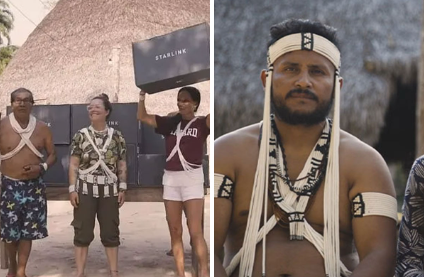Assignment
Achievement
Hire Experts
Reviews
Free Services
Grades
Offers
Order Now
50,000+
Orders Delivered
4.9/5.0
Star Rating
4000+
PhD Experts
24 x 7
Query Resolution
100 +
Subjects Catered
Our Experts
Reviews
Free Assignment Services
☞Title Pages - 100 Words
$05.00 free
☞Downloading Free Guide
$20.00 free
☞Upload Completed Tasks
$20.00 free
☞Genuine Content Report
$20.00 free
☞Consultation By Experts
$06.00 free
☞Unrestricted Revisions
$10.00 free
☞Grammar Check for Task
$25.00 free
☞Plagiarism Inspections
$25.00 free
Book Now and get Free Services Upto $0.00
Grades
Offers

1. PLACE YOUR ORDER
Whenever you fill out their order form, please read it carefully and then fill it out.

2. MAKE PAYMENT
Choose our secure payment method to pay for your order and collect your order from us with security.

3. GET YOUR DOCUMENT
Our writers write you plagiarism-free assignments and provide them to you before the deadline.
Our Experts

Search Assignments

Customers Reviews
Elon Musk led Starlink is trailblazing global internet services. The privately-owned company is revolutionizing the internet access by utilizing a constellation of satellites to reach remote areas.

The company is determined to make internet accessible to all, but a recent story highlights the challenges of introducing internet access to indigenous communities.

In 2023, an estimated 2.7 billion people still lack access to the internet. This is where Starlink aim to bridge the gap in the digital divide and connect the unconnected. Starlink aims to provide accessible and affordable internet services throughout the world.
Through its low-Earth orbit (LEO) satellites, Starlink communicate with user terminals and deliver internet services.
These satellites are much closer to earth, hence signal latency (signal delay) is minimum. According to Starlink updates in March 2024, the median latency for Starlink users in the United States has been reduced to 33 milliseconds (ms) during peak usage times from previously reported 48.5 ms.
Satellite internet is also a boon for remote areas where laying down cable or fiber optic lines is impractical.
In one such attempt, the remote communities of Amazon also gained internet access nearly nine months ago. One of the tribes that potentially gained internet access through Starlink was the Marubo people, a community of about 2,000 individuals living in western Brazil.
Recently, News reports surfaced highlighting the concerns of elderly members of the tribe. With internet access came exposure to a vast amount of information, including pornography. This became a concern for isolated communities with limited cultural preparation for such material. According to them, the younger tribe members are now ‘hooked’ on social media and are sharing pornographic material on private whatsApp chat groups.

As soon as the article got published, the news spread rapidly online.
Elon Musk, known for his outspoken nature, has now, addressed the situation on social media. Musk is the owner of X, formally Twitter, and Starlink, the company involved in the controversy.
He took to social media to bash New York Times for their disrespectful remarks about the communities. ‘It is disrespectful for New York Times to write insensitive content about Marubo tribe’.
Following criticism for its sensationalized portrayal of the Marubo tribe's internet access, NYT issued an apology, stating that their article has been blown out of proportion and is taken out-of-context.
The case of Marubo tribe and Starlink’s internet access has raised a fair question- how can we provide internet services to remote communities without drowning their traditions and culture.
The Starlink and Marubo Tribe story isn’t the first case about the pitfalls on internet access in remote areas.
In 2019, a study was published by the University of Melbourne about examining the impacts of internet on remote Australian communities. The report concluded that while economic and educational benefits were prevalent, there was an increased risk about social media addiction and exposure to inappropriate content.
A World Bank report estimates that increased broadband penetration can boost GDP growth by 1.38 percentage points. This is particularly impactful in remote communities where economic opportunities are scarce.
In 2021, UNESCO conducted another study to understand the influence of internet on indigenous cultures. It raised concerns over cultural homogenization and loss of traditional knowledge and exploitation of cultural heritage online.
On the other hand, internet connectivity allows for better access to telemedicine services, education, e-commerce facilities, and connects remote communities to the rest of the world.
Both developed and developing countries are adopting satellite internet access. The United States, European Union, China, and now India are giving green signal to satellite internet services.
The satellite internet services market is estimated to grow at a CAGR of 33.7% from 2023 to 2028 as predicted by MarketandMarkets. With such a high growth rate, the user base and the market size are bound to swell in the coming years.
Amid this, the demand for satellite internet services in remote communities will also increase since the reach of traditional methods, such as cable and fiber are not feasible.
So, in our opinion, it is important to avoid sensationalizing the narrative. Exposure to questionable content is just one concern, and the Marubo tribe leader himself has refuted these claims as exaggerated.
Imagine students in the Amazon rainforest gaining access to online learning resources, or indigenous artisans connecting with a global marketplace to sell their crafts and share their traditional craftsmanship techniques. The internet can be a powerful tool for cultural preservation as well. Tribes can also use social media to share their language and craft.
However, for censoring the content for indigenous communities, we can include content moderation and content filtration for the remote communities to ease them into the world of internet.
Disclaimer: all content and intellectual property remain the exclusive property of value Assignment Help




No Comments